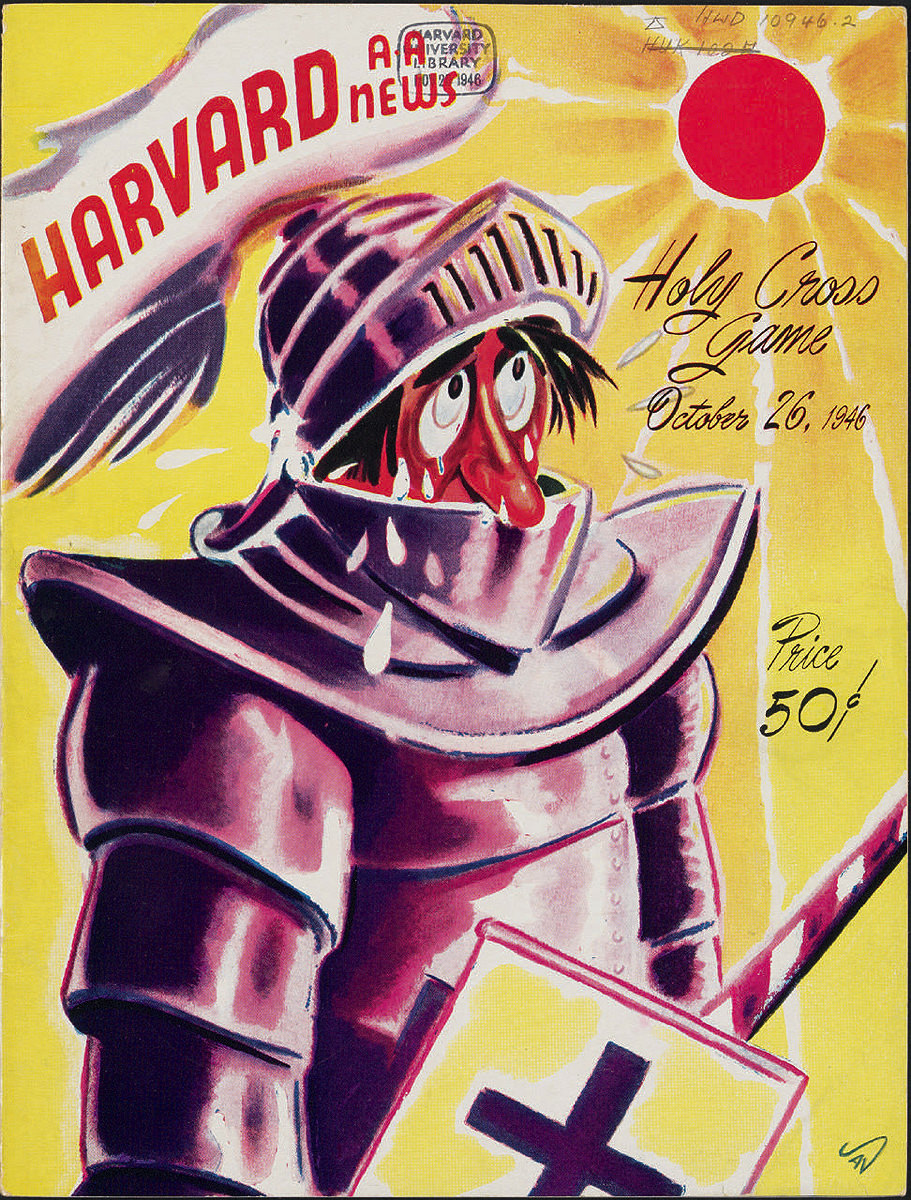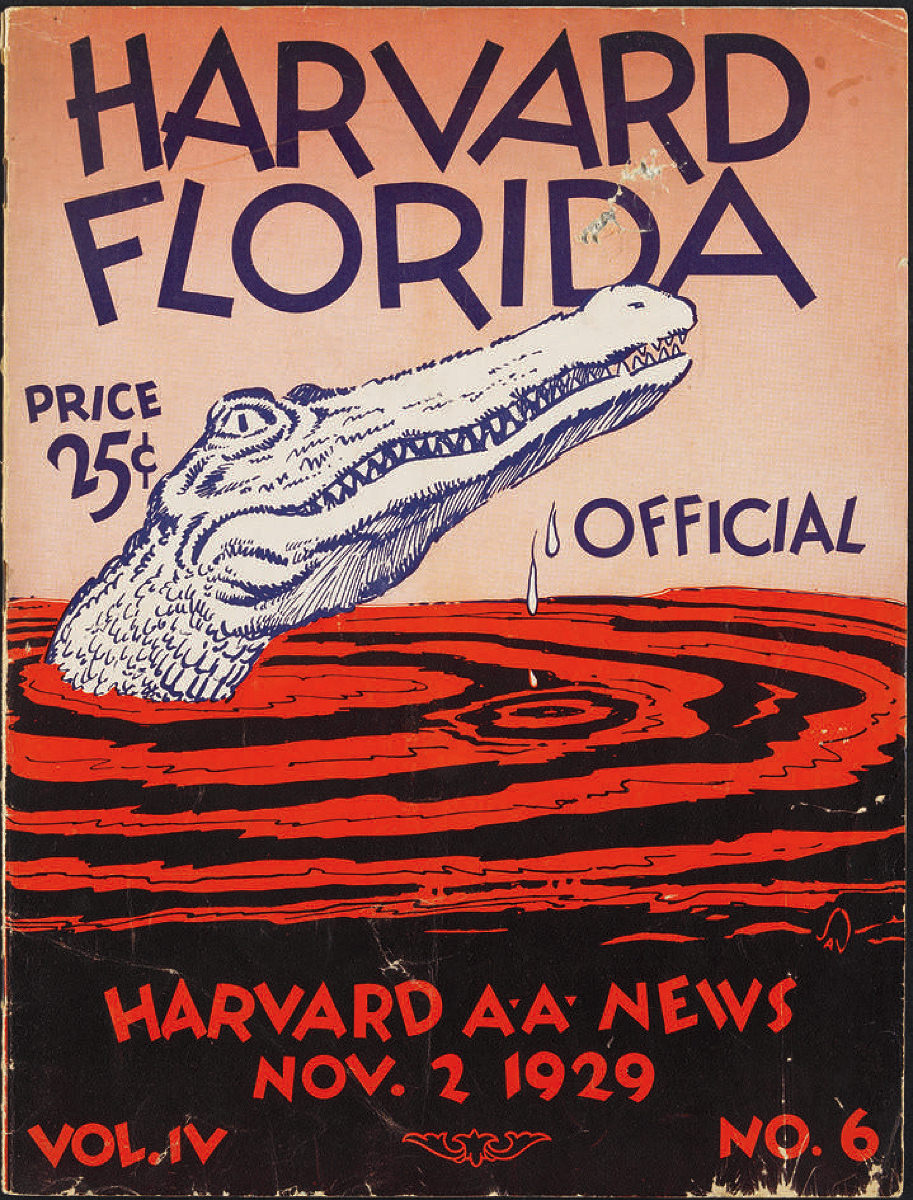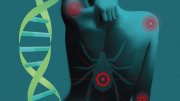Between 1890 and 1919, Harvard won seven college football national championships. Though the next decades featured strong teams and significant fan support, Crimson football never regained its national prestige. Harvard’s gameday football programs from the following decades showcase a sport—and a country—in transition.

Once mostly contained to the Northeast, in the first quarter of the twentieth century, collegiate football kicked off nationwide. Harvard squared up against—and defeated—rising stars of the South like Texas and Florida. Throughout the 1930s and ’40s, the Athletic Association’s advertising manager, A.B. Savrann, hand-painted the program covers, discreetly placing his curved signature. Savrann’s dynamic, retro style elevated the booklet from a packet of information to a piece of art. For the 1946 running of The Game, Savrann drew a bulldog wrapping his leash around a Pilgrim’s legs. But—fret not—the Pilgrim cut himself free with a hidden knife.

Inside the book, fans could find the contending rosters (including each player’s number, name, position, age, weight, height, prep school, and hometown). After the games, children would bring the programs onto the field for autographs. The advertisements and articles signaled the cultural trends of the era. In the mid-1920s, Caribbean-bound steamships ceded their ad space to cigarette companies. Early in World War II, the programs hawked war bonds and officers’ uniforms.
As the century hit halftime, Harvard no longer fielded nationally ranked teams. A change in substitution rules introduced specialized offensive and defensive corps, essentially doubling the number of players necessary for competition. Beginning in 1954, the newly formed Ivy League barred its members from playing in postseason bowl games, and, in 1981, the conference moved down to Division I-AA. As Harvard football declined in prominence, the artistic quality of its programs diminished as well. By the ’70s, photographs replaced the skilled and humorous cover paintings. The Athletic Association no longer produces football programs.






